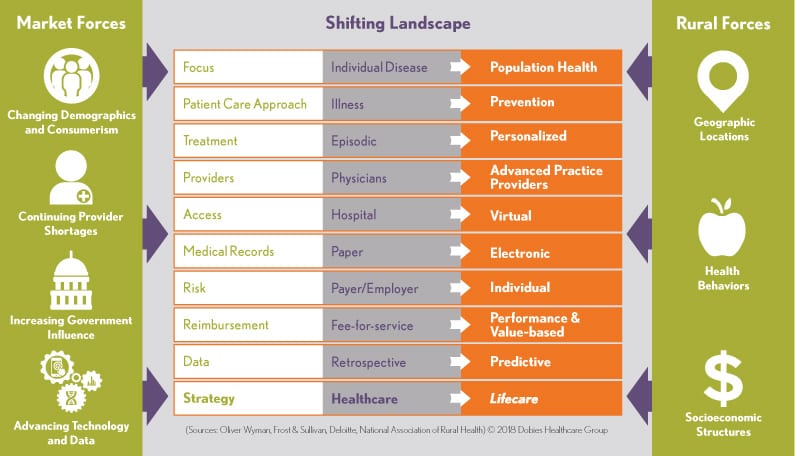Leading the Way: What Every New Hospital CEO Needs to Know from the Marketing Team
 One in four U.S. hospitals hires a new CEO every 3-4 years. That statistic, which comes from a 10-year study by the American College of Healthcare Executives, is a call to action. Why? Because rapid turnover at the executive level can have adverse effects on hospital relationships with key stakeholders like physicians, staff, board members, community partners, donors and others.
One in four U.S. hospitals hires a new CEO every 3-4 years. That statistic, which comes from a 10-year study by the American College of Healthcare Executives, is a call to action. Why? Because rapid turnover at the executive level can have adverse effects on hospital relationships with key stakeholders like physicians, staff, board members, community partners, donors and others.
Clearly, hospitals – particularly rural and frontier hospitals – are challenged by recruiting the right leader for the organization and its community. Few studies, and even fewer hospital marketing executives, have explored what it takes to prepare newly recruited CEOs for stronger leadership. When new CEOs have an in-depth understanding of local market conditions and positioning opportunities, they are better prepared to move the organization forward…

Read more


 Over the last few weeks, we have been discussing
Over the last few weeks, we have been discussing  …
… Several years ago, I spent a day at the
Several years ago, I spent a day at the  Thriving in today’s big data world, we look for data metrics to substantiate everything we do. In marketing and advertising, this adage certainly holds true: not everything that counts can be counted (such as word-of-mouth marketing), and not everything that can be counted counts.
Thriving in today’s big data world, we look for data metrics to substantiate everything we do. In marketing and advertising, this adage certainly holds true: not everything that counts can be counted (such as word-of-mouth marketing), and not everything that can be counted counts. There has been a notable uptick in consumer use of products, services and web/mobile applications that cater to their increasing desire to maintain an overall healthy state of being. The connected wearable device category alone reached 453 million users in 2017, and it is projected to nearly double by 2021 (findings available
There has been a notable uptick in consumer use of products, services and web/mobile applications that cater to their increasing desire to maintain an overall healthy state of being. The connected wearable device category alone reached 453 million users in 2017, and it is projected to nearly double by 2021 (findings available 
